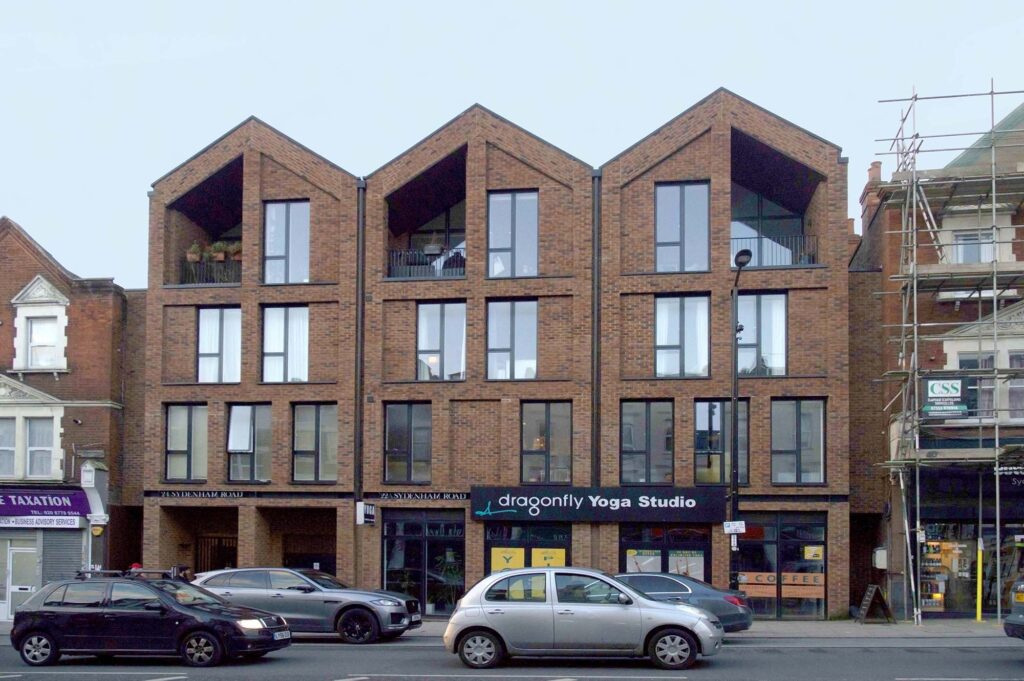8. Permitted Development
8.1. What is permitted development?
You can perform certain types of work without needing to apply for planning permission through “permitted development rights” (PDR). They derive from a general planning permission granted not by the local authority but by parliament.
Change of use to residential usually requires a ‘prior approval’ application which allows the local planning authority to review its compliance with permitted development policy. This will generally be in the form of a basic set of drawings and will likely request information on flood risk, parking, waste and recycling, and ground contamination.
Permitted development legislation changes frequently, and what is – and what isn’t – considered as such can vary often. In general terms, however, the following things are covered by permitted development:
- Some changes of use, for example from offices to residential subject to prior approval
- Upward extension of an existing building to create additional dwellings, again, subject to prior approval being granted
Flats, houses converted into flats, maisonettes and listed buildings may not have the relevant permitted development rights and planning permission may be required for extensions or alterations. In addition, permitted development is limited in some areas through an Article 4 direction. These areas include some Conservation Areas as set out in section 7.
Advice on whether or not planning permission or building regulations approval are required can be found within Lewisham’s website.
8.2. Why a full planning application is usually a better option
Whilst permitted development might seem like an attractive opportunity for delivering new homes, in most cases the potential is limited by the very specific restrictions placed on what is considered permitted development. There are several ways in which a carefully considered full planning application can achieve higher density, better quality, more attractive and more sustainable homes than those approved through PDR.
Capacity
It is likely that by seeking approval through formal planning processes, an increased site capacity can be achieved when compared to the limitations of working within the PDR restrictions. Whilst the costs associated with submitting a prior approval application are usually lower than that for a formal planning application, a well-designed residential planning application may deliver more new homes than the equivalent permitted development scheme, far outweighing any savings made via this route. With a more certain planning outcome, enabled with the use of this document, permitted development should not be considered as a fast-track route to approval.
Higher quality / greater control
Developments achieved through PDR are often of lower quality when compared with those achieved through formal planning. For example, a change of use achieved through PDR will restrict the changes to an external façade, and this could impact locations of windows and doors, leading to poor outlook and light quality. Compare this with the same change of use achieved through formal planning where one can apply for new or amended window openings – the opportunity for change is far greater. Higher quality homes result in higher values, and an improvement of the wellbeing of their occupants.
Affordability
Whilst seeking approval via PDR will likely cost less than a planning application, this is heavily offset by the opportunities a formal planning approval will offer and the associated uplift in value.
As outlined in section 9, by undertaking a feasibility study at the start of the design process, for a relatively small cost one can establish at the outset what development opportunities an application site possesses.
Limits of permitted development
Certain types of minor alterations and small extensions to existing houses are covered by permitted development rights. However, even some matters that appear relatively minor (eg. crossovers, trees) may require planning permission.
Flats, houses converted into flats, maisonettes and listed buildings may not have the relevant permitted development rights that individual homes possess and in these cases planning permission may be required.
8.3. Use of this document
Most of the advice in this document will apply to all small sites. Even if a formal planning application is not required for development, the guidance set out within this SPD, other relevant planning policy documents and Conservation Area appraisals will act as good practice guidance to help applicants achieve high quality design and place making.
